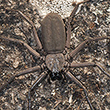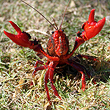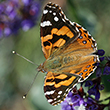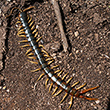|
|
Creatures that belong to the phylum Arthropoda all have an external skeleton, a segmented body and jointed appendages. There are over a million species of arthropods — this is over 80% of all the living species on Earth that have been identified so far. Arthropods include not only insects and spiders; but also scorpions, centipedes and crustaceans. They can be found in the air, on land and under water.
An estimated 75% of Australian invertebrate fauna has not yet been formally described and doesn't have a scientific name. Many arthropods can't be identified past Family and even that is only with considerable expertise. Some species are very similar and cannot be distinguished without the use of a microscope. Typically, arthropods are quite small and fast-moving so they sometimes are very difficult to photograph. We've done our best to identify the arthropods listed here, but if you think we've made a mistake or can help us better identify a creature, please don't hesitate to Contact Us.
|
Arachnids
All arachnids have eight legs and don't have antenna or wings. Spiders are arachnids, as are scorpions, mites and ticks.
|
|

|
Crustaceans
The majority of crustaceans are aquatic - crabs, lobsters, prawns and yabbies. The most notable of Girraween's crustacean species is Sutton's crayfish.
|
|

|
Insects
Insects have a three-part body (head, thorax, and abdomen), three pairs of jointed legs, compound eyes, and two antennae. Many have wings.
|
|

|
Myriapods
Centipedes and millipedes belong to the Myriapoda subphylum. Although their name suggests that they have myriad (10,000) legs, myriapods range from having over 750 legs to having less than ten legs.
|
|

|
|

